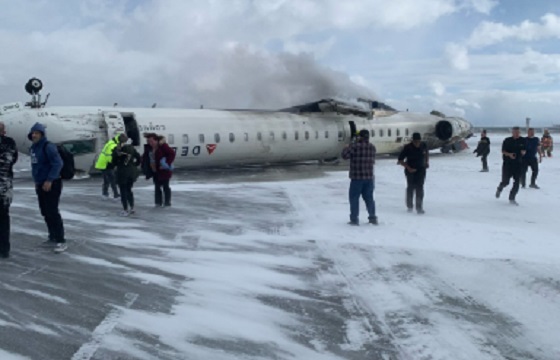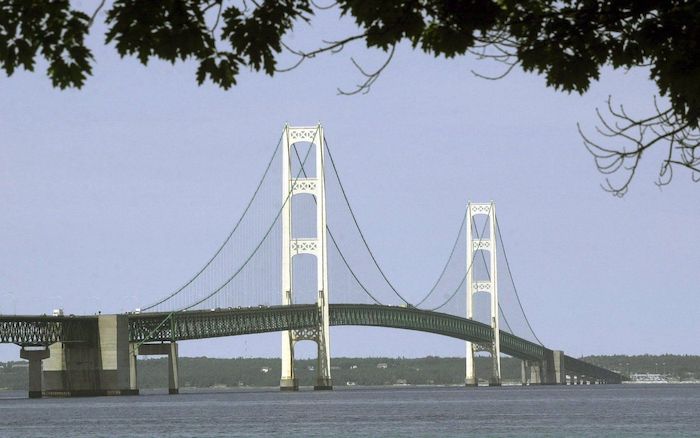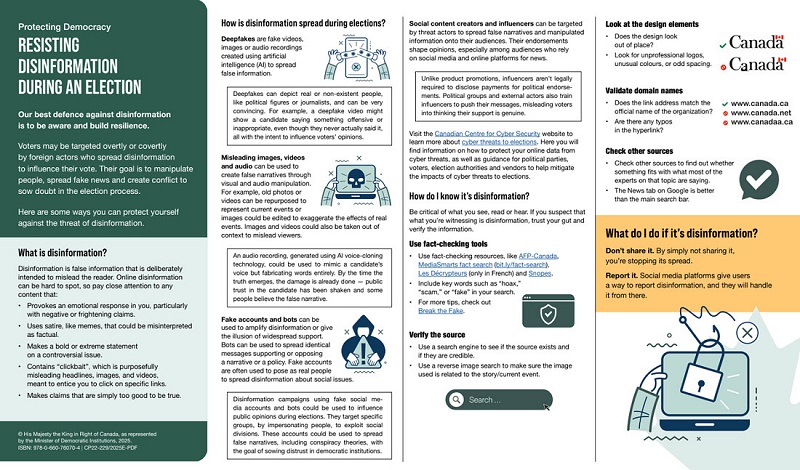Disaster
‘It’s Going to Be Catastrophic’: Why the Next Pandemic Will Be Worse Than COVID

From Heartland Daily News
By Rob Bluey of the Daily Signal
The former director of the Centers for Disease Control and Prevention is warning Americans to prepare for the next pandemic, which he fears will be more catastrophic than COVID-19.
Dr. Robert Redfield, a virologist who continues to treat patients suffering from COVID, oversaw the CDC’s initial response to the pandemic and served as a member of the White House’s Coronavirus Task Force under former President Donald Trump.
“We are going to have another pandemic,” Redfield told The Daily Signal. “I do believe it’s going to be much more catastrophic than the COVID pandemic.”
Redfield predicted the next pandemic would be the bird flu, also known as H5N1. Its mortality rate is significantly higher than COVID: 52% of the 888 infected patients with H5N1 have died since 2003.
“COVID’s mortality was about 0.6%,” Redfield said. “Bird flu’s mortality is going to be north of 5%, 10%, 15%, 20%. It’s going to be catastrophic.”
With more than 100 million chickens and turkeys already infected in the United States, Redfield said bird flu has also been found in 27 different mammals. And while there remains a low risk of infecting humans right now, another mishap like the COVID lab leak could quickly expedite bird flu’s transmission.
“This is why I’ve called for a moratorium on gain-of-function research until we can have a broader public debate about it,” he said. “I’m not convinced it needs to be done. I don’t think there’s really any benefit from it. Some of my colleagues disagree with me, but I think we shouldn’t do it until we know how we do it in a safe, responsible, and effective way and we clearly can’t do that at the present time.”
Redfield served on a nonpartisan commission convened by The Heritage Foundation, which issued a blistering critique of China’s COVID-19 cover-up. The commission, which released its report Monday, blamed the communist government in Beijing for obfuscating the truth about the pandemic’s origin and causing widespread damage and death as a result.
Americans can take an important step now to prevent such a disaster from happening in the future, Redfield said.
“COVID is a test case for why we don’t want to do gain-of-function research. I don’t think it was worth 28 million lives. I don’t think it was worth the trillion dollars of cost and the disruption that we had,” he said. “The COVID pandemic was a direct consequence of science and the arrogance that science had that nothing could go wrong. And, in fact, something went terribly wrong.”
The former CDC director, who served under Trump from 2018 to 2021, said biosecurity is the most important national security threat facing America today.
“It’s a time for our nation to step back and realize that the playing field has changed, similar to what happened when the atomic bomb came into the theater,” Redfield said.
Redfield spoke with The Daily Signal following the release of the commission’s report, “Holding China Accountable for Its Role in the Most Catastrophic Pandemic of Our Time: COVID-19.” Commissioners spoke at a Heritage Foundation event Monday.
Redfield criticized the Chinese government for failing to alert others to the threat posed by COVID when it was first discovered in the summer of 2019. The consequences, he said, were deadly. More than 28 million people worldwide have died from COVID-19, including 1.1 million in the United States.
The commission calculated the U.S. economic damages at a staggering $18 trillion.
What can policymakers do to hold China accountable?
The commission recommends a national security review of U.S.-China scientific collaborations and a deeper investigation into COVID-19’s origins. It also recommended that Congress amend the Foreign Sovereign Immunities Act to grant U.S. courts jurisdiction over cases brought by American citizens who are seeking monetary damages from China.
In addition to Redfield, other members of the nonpartisan commission included:
- John Ratcliffe, former director of national intelligence (commission chairman)
- Robert C. O’Brien, chairman of American Global Strategies and former U.S. national security adviser
- Heidi Heitkamp, director of the University of Chicago’s Institute of Politics and former U.S. senator from North Dakota
- Matthew Pottinger, chairman of the Foundation for Defense of Democracies China Program and former U.S. deputy national security adviser
- Jamie Metzl, founder and chair of OneShared.World, former NSC and State Department official and member of WHO expert advisory committee on human genome editing
- John Yoo, Emanuel S. Heller professor of law at the University of California, Berkeley
- Dr. Robert Kadlec, physician and former assistant secretary of health and human services
- David Feith, adjunct senior fellow at the Center for a New American Security and former deputy assistant secretary of state for East Asia and Pacific affairs
Rob Bluey ([email protected]) is the executive editor of The Daily Signal. This article appeared in The Daily Signal on July 8, 2024. Reprinted with permission
Disaster
Delta flight crashes and flips upside-down at Toronto airport as 3 are left critically injured

Quick Hit:
A Delta Air Lines plane crash-landed and flipped upside-down at Toronto Pearson International Airport on Monday, leaving three passengers— including a child— critically injured. The incident occurred just before 3 p.m. after the aircraft took off from Minneapolis earlier in the day. Images from the scene show the plane severely damaged, with emergency crews rushing to assist passengers.
BREAKING- Toronto had a Delta flight flipped upside down. I got these photos from a friend on the plane. He’s okay. Minnesota to Toronto. pic.twitter.com/DeSoYAlsVo
— Kellie Meyer (@KellieMeyerNews) February 17, 2025
Key Details:
- The flight, identified as Delta Flight 4819, departed from Minneapolis at 11:47 a.m. before crash-landing in Toronto.
- At least eight people were reported injured, with three in critical condition, including a child and a man in his 60s.
- The aircraft, a Bombardier CRJ-900LR, was flipped upside-down on the runway, with one wing crumpled and the tail section partially sheared off.
Diving Deeper:
Emergency responders rushed to Toronto Pearson International Airport on Monday afternoon after Delta Flight 4819 suffered a crash landing, flipping upside-down on the snowy runway. Images from the scene depict a harrowing sight— the overturned aircraft smoldering, with dazed passengers evacuating.
According to CP24 News, eight people sustained injuries in the crash, three of whom were transported to separate hospitals in critical condition, including a pediatric patient. The Peel Regional Police confirmed that while most passengers made it out unharmed, authorities remained on-site to assess the full extent of the injuries and damage.
Passenger John Nelson captured the immediate aftermath on video, posting to Facebook: “We’re in Toronto. We just landed. Our plane crashed, it’s upside-down. Fire department is on site. Most people appear to be OK. We’re all getting off.” The footage shows emergency personnel navigating the snowy conditions to reach the aircraft and assist those on board.
Toronto Pearson officials confirmed on X (formerly Twitter) that all passengers and crew were accounted for, while the Association of Flight Attendants union stated that no fatalities had been reported. However, airport operations were briefly suspended in the wake of the incident, with arrivals and departures temporarily halted.
The crash comes after a weekend winter storm dumped nearly nine inches of snow on Toronto, prompting airport crews to work overnight to clear runways. Investigators will now seek to determine whether weather conditions or mechanical failure played a role in the crash. This marks the most serious commercial aviation incident since the January 29 collision at Ronald Reagan National Airport involving an Army Black Hawk helicopter and an American Airlines flight.
Daily Caller
‘Coming Down Like A Missile’: Former FAA Safety Rep Says Plane in Philadelphia Crash Appeared ‘100% Out of Control’

Kyle Bailey on “Hannity” discussing Philly plane crash [Screenshot/Fox News/”Hannity”]

From the Daily Caller News Foundation
By Hailey Gomez
Former Federal Aviation Administration (FAA) Safety Team representative Kyle Bailey said Friday evening on Fox News that the jet caught on camera crashing in northeastern Philadelphia appeared “100% out of control.”
Around 6:30 p.m. local time, videos surfaced showing a small jet crashing into a neighborhood in northeastern Philadelphia, with images and footage depicting the plane erupting into a fireball. The FAA confirmed the crash in a statement, identifying the aircraft as a Learjet 55 that had been departing from northeastern Philadelphia Airport en route to Springfield-Branson National Airport in Missouri.
On “Hannity,” Fox’s Sean Hannity began discussing the Learjet 55, adding that his pilot friends had described the aircraft as “a sports car in the air.” He then asked Bailey if this type of jet is different from the “average commuter jet.”
Dear Readers:
As a nonprofit, we are dependent on the generosity of our readers. Please consider making a small donation of any amount here. Thank you!
“That’s exactly right, Sean. You have to be ahead of that airplane at all times, or it will get control of you. That plane was doing in excess of 10,000 feet per minute rate of descent, and it didn’t even make it to 2,000 feet after takeoff,” Bailey said. “Right after takeoff, the controller was asking, calling for the airplane to respond. There was no response by the flight crew. There was no communication.”
“The controller was a little bit stumped in trying to make contact with the airplane, and that tells me that the pilot completely was consumed with whatever was going on, and from that rate of descent and from that airplane coming down like a missile, it looked like it could have potentially been at full power,” Bailey added. “It was just coming down there at a rate that really was unbelievable.”
WATCH:
Bailey went on to say that the explosion was likely massive due to the “large quantity of jet fuel,” adding that he believed there was probably nothing the pilot “could have done” to prevent the incident.
“So from taking off for a flight of the duration of where it was going, that probably was very closely, fully loaded with fuel. So that huge fireball that we saw is the result of a large quantity of jet fuel, and that big, almost like — for lack of a better term — like a nuclear-like explosion is probably the jet fuel reflecting off that cloud base,” Bailey said.
“That’s why it looks a little bit strange, but there is no doubt that the plane was 100% out of control, and there was probably nothing that pilot could have done,” Bailey added. “Not even a 10-second mayday came out of that radio back to the control tower.”
The plane was reportedly on a medical assignment with four crew members and two passengers aboard, according to 6ABC. During a press conference around 8:30 p.m., Democratic Philadelphia Mayor Cherelle Parker could not provide a fatality count. She instead asked residents “for prayers.”
The crash comes just days after a commercial plane collided with a military helicopter near Washington Reagan National Airport on Wednesday evening, killing all involved.
The incident is under investigation by the National Transportation Safety Board and FAA.
-

 Daily Caller2 days ago
Daily Caller2 days agoTrump Executive Orders ensure ‘Beautiful Clean’ Affordable Coal will continue to bolster US energy grid
-

 2025 Federal Election2 days ago
2025 Federal Election2 days agoBREAKING from THE BUREAU: Pro-Beijing Group That Pushed Erin O’Toole’s Exit Warns Chinese Canadians to “Vote Carefully”
-

 Business2 days ago
Business2 days agoChina, Mexico, Canada Flagged in $1.4 Billion Fentanyl Trade by U.S. Financial Watchdog
-

 COVID-191 day ago
COVID-191 day agoTamara Lich and Chris Barber trial update: The Longest Mischief Trial of All Time continues..
-

 Energy1 day ago
Energy1 day agoStraits of Mackinac Tunnel for Line 5 Pipeline to get “accelerated review”: US Army Corps of Engineers
-

 2025 Federal Election2 days ago
2025 Federal Election2 days agoAllegations of ethical misconduct by the Prime Minister and Government of Canada during the current federal election campaign
-

 2025 Federal Election15 hours ago
2025 Federal Election15 hours agoPRC-Linked Disinformation Claims Conservatives Threaten Chinese Diaspora Interests, Take Aim at PM Carney’s Debate Remark
-

 Daily Caller2 days ago
Daily Caller2 days agoDOJ Releases Dossier Of Deported Maryland Man’s Alleged MS-13 Gang Ties





